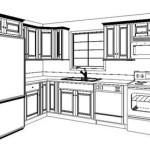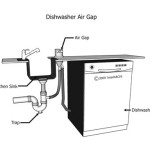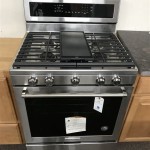Cost to Remove Kitchen Cabinets and Countertops Per Square Foot: A Comprehensive Guide
Removing kitchen cabinets and countertops is a common undertaking for homeowners looking to remodel their kitchens. Whether preparing for a complete renovation or simply replacing outdated features, understanding the costs associated with this process is crucial for budgeting and planning. The cost can vary significantly based on several factors, including the size of the kitchen, the materials used, the complexity of the removal, and the contractor's rates. This article will provide a detailed overview of the costs involved in removing kitchen cabinets and countertops, with a specific focus on pricing per square foot.
The first step in determining the expense is understanding the scope of the project. Are you removing just the cabinets, just the countertops, or both? Are there any appliances that need to be disconnected and moved? Are you responsible for disposing of the materials, or will the contractor handle that? These factors will all impact the overall cost.
Another crucial factor to consider is whether the cabinets and countertops are being removed for reuse or disposal. If the cabinets are in good condition and you plan to donate or sell them, extra care will need to be taken during the removal process to avoid damage. This will likely increase the labor costs. Conversely, if the items are being discarded, the removal process can be more efficient, potentially reducing the labor time but adding disposal fees.
Key Point 1: Factors Influencing the Cost Per Square Foot
Several factors directly influence the cost per square foot of removing kitchen cabinets and countertops. These factors need to be carefully considered to obtain an accurate estimate.
Material Type: The type of material used in the cabinets and countertops significantly impacts the removal cost. Solid wood cabinets are typically more challenging to remove than particleboard cabinets due to their weight and construction. Similarly, granite or quartz countertops are more difficult to remove than laminate countertops. The heavier and more durable the material, the more labor and specialized equipment may be required, resulting in higher removal costs. Demolishing and removing ceramic tile countertops, for example, is typically more labor-intensive due to the mortar and grout involved.
Kitchen Size and Layout: The size of the kitchen directly affects the amount of labor and time required to complete the removal. A larger kitchen with more cabinets and countertop space will naturally incur higher costs. The layout of the kitchen also plays a role. A complex layout with islands, peninsulas, or tight corners can make the removal process more challenging and time-consuming, potentially increasing labor costs. Accessibility to the kitchen is another important consideration. Difficult access can require additional labor to transport materials in and out of the space.
Condition of Cabinets and Countertops: The condition of the cabinets and countertops can also influence the removal cost. If the cabinets are in poor condition with loose hinges, broken drawers, or water damage, they may be more difficult to remove without causing further damage. Similarly, if the countertops are heavily damaged or improperly installed, the removal process may require more effort and care. In some cases, specialized tools or techniques may be necessary to safely remove damaged materials, potentially increasing costs.
Demolition vs. Careful Removal: As mentioned earlier, the method of removal, whether demolition or careful disassembly, will significantly impact costs. If the cabinets and countertops are being removed for disposal, the contractor can typically use more aggressive methods to expedite the process. However, if the items are being salvaged for reuse, the contractor must take extra care to avoid damaging them. This will require more time and labor, resulting in higher costs. The client should clearly communicate their intentions to the contractor beforehand to ensure they receive an accurate estimate.
Key Point 2: Average Cost Ranges Per Square Foot
While the exact cost per square foot can vary based on the factors mentioned above, it’s helpful to have a general understanding of the average cost ranges. The following figures provide a guideline for budgeting purposes:
Cabinet Removal: The average cost to remove kitchen cabinets ranges from $5 to $15 per square foot. This typically includes disconnecting any plumbing or electrical connections, removing the cabinets from the walls, and preparing the area for the new installation. The lower end of the range typically applies to simpler cabinet removals, such as those involving particleboard cabinets in good condition. The higher end of the range applies to more complex removals, such as those involving solid wood cabinets in poor condition or those requiring careful disassembly for reuse.
Countertop Removal: The average cost to remove kitchen countertops ranges from $3 to $20 per square foot. This includes disconnecting any plumbing fixtures, such as sinks and faucets, removing the countertop from the cabinets, and disposing of the materials. The lower end of the range typically applies to laminate countertops, which are relatively easy to remove. The higher end of the range applies to granite, quartz, or concrete countertops, which are heavier and more difficult to remove. Removing tile countertops can also be expensive due to the labor required to remove the grout and mortar.
Combined Cabinet and Countertop Removal: When removing both cabinets and countertops, the combined cost can range from $8 to $35 per square foot. However, it's important to note that some contractors may offer a discounted rate for combined removals as there are some efficiencies in doing both at the same time.
These are just average ranges and are subject to change depending on the contractor's rates, the geographic location, and the specific details of the project. Homeowners should obtain quotes from multiple contractors to compare prices and services before making a decision.
Key Point 3: Additional Costs and Considerations
Beyond the basic removal costs, several additional expenses and considerations may impact the overall budget. It's important to factor these into the planning process to avoid surprises.
Disposal Fees: Depending on the contractor and the local regulations, there may be disposal fees associated with removing the old cabinets and countertops. These fees can vary depending on the volume and type of materials being disposed of. Some contractors include disposal fees in their overall estimate, while others charge them separately. It's important to clarify this with the contractor upfront.
Plumbing and Electrical Work: Disconnecting plumbing and electrical fixtures are often necessary before removing cabinets and countertops. If you are not qualified to perform these tasks yourself, you will need to hire a licensed plumber and electrician. These services can add to the overall cost of the project. The complexity of the plumbing and electrical work will determine the cost. For example, moving plumbing lines or electrical outlets can be significantly more expensive than simply disconnecting them.
Damage Repair: Removing cabinets and countertops can sometimes result in minor damage to the walls, floors, or ceilings. This may require patching holes, repairing drywall, or touching up paint. It's a good idea to budget for potential damage repairs, especially if you are planning to install new cabinets and countertops. The extent of the damage will determine the cost of the repairs.
Unexpected Issues: Unexpected issues can arise during the removal process, such as discovering hidden plumbing leaks or structural problems behind the cabinets. These issues can require additional work and increase the overall cost of the project. It's always a good idea to have a contingency fund in place to cover unexpected expenses.
Permits: In some jurisdictions, a permit may be required to remove kitchen cabinets and countertops, especially if plumbing or electrical work is involved. It's important to check with the local building department to determine if a permit is necessary and to obtain the required permits before starting the project. The cost of permits can vary depending on the location and the scope of the work.
Ultimately, the cost to remove kitchen cabinets and countertops per square foot is dependent on a complex interplay of factors. Obtaining multiple quotes from qualified contractors, meticulously detailing the project scope, and factoring in potential additional costs are paramount to accurate budgeting. It is also essential to clearly communicate your expectations to ensure the contractor understands your needs and can provide an accurate estimate.

How Much Does A Kitchen Remodel Cost 2025

The Cost To Replace Kitchen Cabinets And Countertops America S Advantage Remodeling

How Much Does A Kitchen Remodel Cost 2025

Cost To Replace Countertops And Cabinets In Maryland Granitepro Remodeling

Replacing Kitchen Countertops And Backsplash Cost Timeline Facts

How Much Does Replacing Kitchen Countertops Cost In 2024

Cost To Install Kitchen Countertops Countertop Replacement Fixr

How Much Does A Kitchen Remodel Cost 2025

The Cost To Replace Kitchen Cabinets And Countertops America S Advantage Remodeling

Cost To Install Kitchen Countertops Countertop Replacement Fixr
Related Posts








